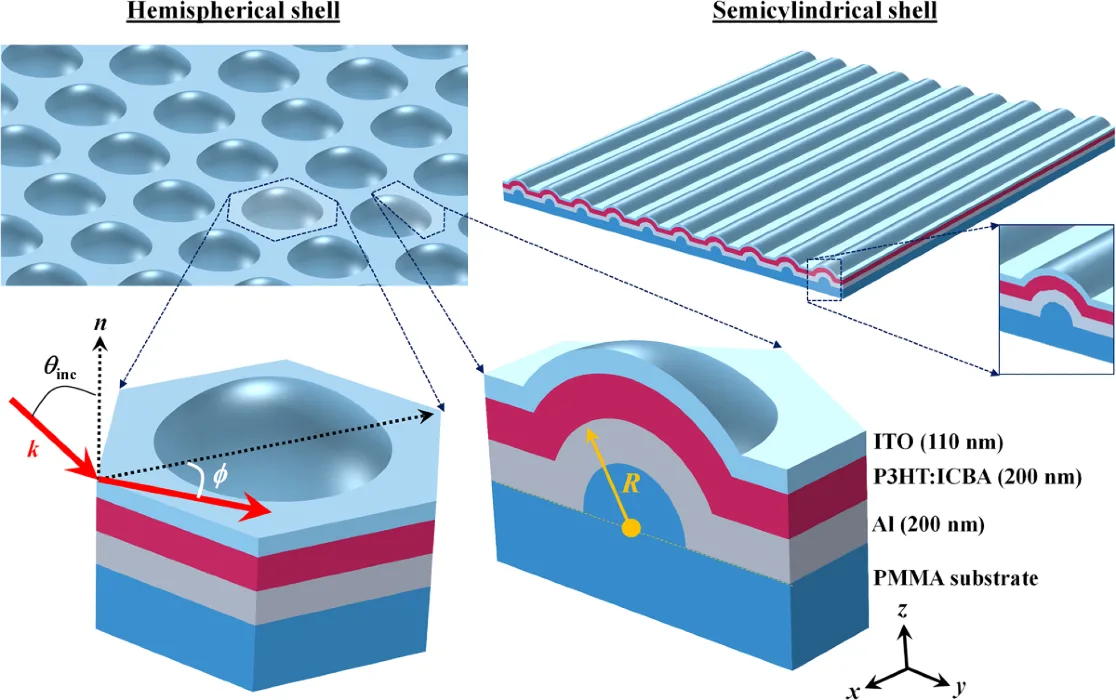In a groundbreaking shift from traditional designs, a new solar cell innovation promises to significantly enhance the efficiency of harnessing sunlight. The novel approach, inspired by the tactile simplicity of braille, introduces “hemispheres” on the surface of solar cells. This textural innovation is not just a design choice but a potential revolution in solar energy capture, suggesting an increase in energy efficiency by an impressive two-thirds.
At the core of this advancement is the understanding that conventional solar cells, with their flat surfaces, are optimized for sunlight absorption within a narrow range of angles. Typically, to maximize exposure to sunlight, these panels are positioned at angles ranging from 15 to 40 degrees. However, this design has its limitations, primarily in its fixed orientation, which doesn’t fully exploit the Sun’s trajectory across the sky.
Researchers have explored various modifications to the solar cell’s surface to overcome these limitations. Among these innovations, the concept of embedding spherical nanoshells to trap and circulate sunlight has shown promise.
Building on this idea, scientists from Abdullah Gül University in Türkiye have taken a novel approach by simulating the impact of dome-shaped bumps on the efficiency of organic solar cells.
The Science Behind the Bumps
The study focused on photovoltaic cells composed of an organic polymer known as P3HT:ICBA, layered above aluminum and a PMMA substrate, and topped with a transparent indium tin oxide (ITO) protective layer. This meticulous structure was maintained across the surface’s dome-shaped enhancements, referred to by the team as “hemispherical shells.”
Through a method called 3D finite element analysis (FEA), the research team dissected the complex interactions within the solar cell to predict how these domes could improve performance.
The results were striking: bumps on the solar cell’s surface could lead to a 36% to 66% boost in light absorption, varying with the light’s polarization. Moreover, these enhancements broaden the range of light directions the cell can effectively harness, offering angular coverage of up to 82 degrees.

(Top left) An aerial view of a new solar panel design featuring dome-like layers for improved energy capture. (Top right) A comparison with an older panel design that used half-cylinder shapes. (Bottom left) Zooming in on a single dome-shaped cell, highlighting the angles at which light hits it. (Bottom right) A side view of a dome-shaped cell, showing how it's built.
Implications and Future Applications
While physical models of these textured solar cells are yet to be realized, the theoretical foundations lay a promising groundwork for future development. This technology has the potential to significantly impact not just conventional rooftop solar installations, but also applications requiring adaptable light absorption, such as wearable electronics.
Professor Dooyoung Hah, the study’s lead author, envisions a broad spectrum of applications for these hemispherical-shell-shaped active layers. From biomedical devices and power-generation windows to greenhouses and the burgeoning field of the Internet of Things, the possibilities are vast.

As this research, published in the Journal of Photonics for Energy, continues to evolve, it represents a significant stride towards more efficient, versatile solar energy solutions. In a world increasingly focused on sustainable and renewable energy sources, innovations like these hemispherical solar cells aren’t just scientific achievements; they are steps toward a greener, more sustainable future.
Source: Journal of Photonics for Energy





















